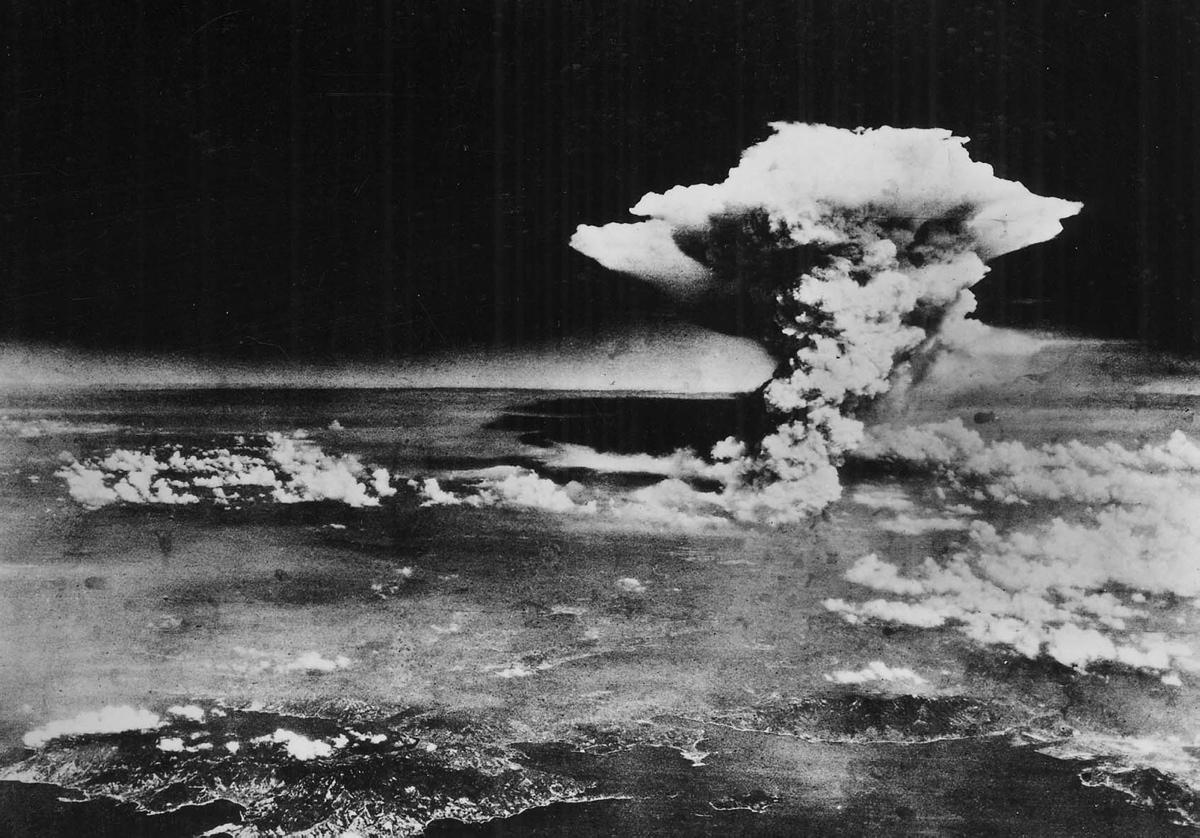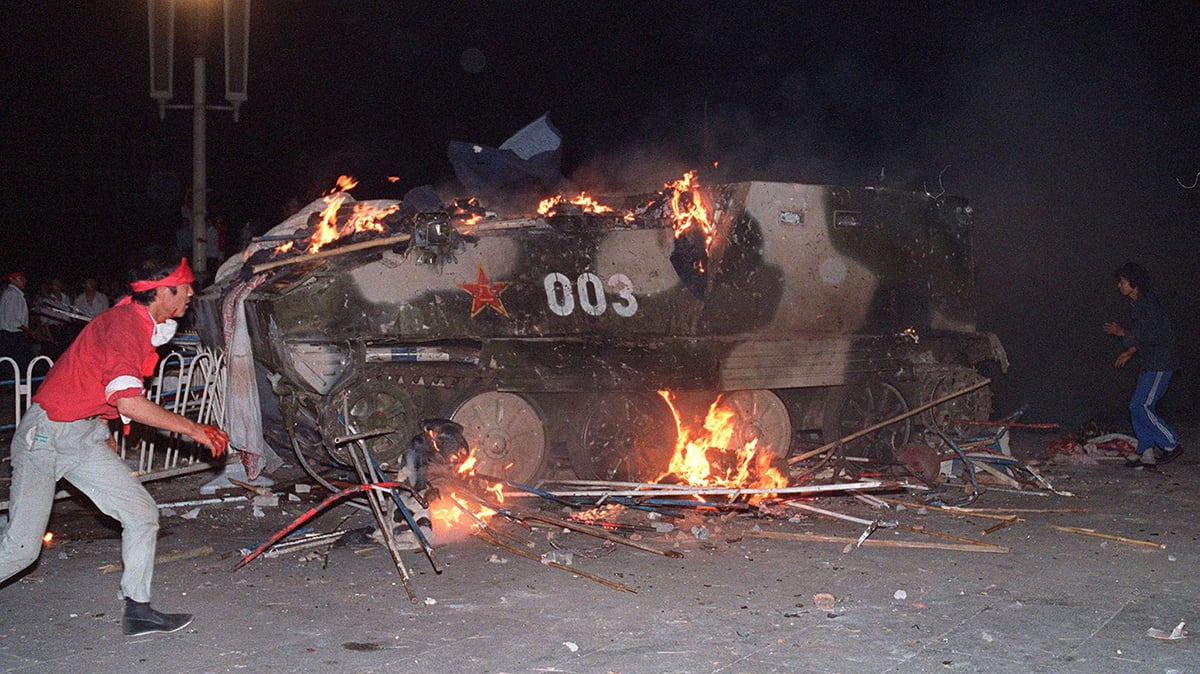This article first appeared in the October 2006 issue of Socialism and Liberation magazine.
In April 2006, the Nepalese people drove King Gyanendra from power. Gyanendra had seized absolute power in February 2005, abolishing the nominal parliament.
Demonstrators in the streets celebrated this victory, and pledged to continue the struggle to destroy the monarchy
 Communist influence continues to grow among Nepalese masses. Photo: Reuters/Gopal Chitrakar |
Five months later, the competing social classes that united in the streets against the monarchy are now facing the basic question: Which class will hold the upper hand in post-monarchy Nepal?
The April 6 strike that initiated the protests was called by an alliance of the Communist Party of Nepal-Maoist and the Seven Party Alliance, a coalition of bourgeois forces and social democratic parties. These two groups have little in common ideologically, but forged a 12-point agreement in November 2005 to form a united front for the return of parliament and for constituent assembly elections.
More than once during the April upheaval, King Gyanendra offered compromises to the increasingly militant movement. On April 24, the Seven Party Alliance accepted the most concessionary of Gyanendra’s offers to reinstate parliament.
This was a victory, but not a total victory. The old parliament was reinstated, with Girija Prasad Koirala as its head, but the people’s movement did not simply want to return to the status quo. Koirala is a four-time prime minister and has been a friend of the monarchy.
The protests continued. Feeling the pressure from the streets, the Nepalese parliament stripped the crown of its remaining political powers on June 10, reducing Gyanendra to a ceremonial monarch. The new government, moreover, promised to convene a constituent assembly—which remains the major demand of the CPN-M and its mass following. A constituent assembly is an elected body with the purpose of drafting and adopting a new constitution.
A tenuous alliance
The Nepalese parliament is headed by capitalist parties—primarily the bourgeois Nepalese Congress party and the social-democratic Communist Party United Marxist Leninist. These forces opposed absolutist feudal monarchy as an inhibition to capitalism in Nepal, which is one of the world’s least-developed countries.
Gyanendra personally owned 17 major companies, and ran the economy—like the country—as a personal fiefdom. In addition, the king’s violent rule and explicit rejection of democratic norms were helping the communists recruit from the oppressed worker and peasant masses.
With the aim of stabilizing capitalist rule and integrating Nepal into the global capitalist economy, these parties supported the replacement of the king with more “responsible,” pro-capitalist forces.
Unable to overpower the throne by themselves, the pro-capitalist parties needed the support of the Communist Party of Nepal-Maoist. That party, which through its mass organizations and its leadership of the People’s Liberation Army control over 80 percent of the country, has the power to call the masses into the streets.
In an interview published in the September-October 2006 issue of the Indian journal Combat Law, CPN-M leader Prachanda highlighted the role of the PLA in the struggle to overthrow the king. “The People’s Army played a critical role in ensuring the mass general strike. The People’s Army is responsible for the reinstatement of the present House of Representatives.”
The mainstream parties would have preferred the demonstrations to end once Parliament was restored. Their class interests had been served. The fundamental question for the capitalist forces and their backers in London and Washington immediately became how to disarm and demobilize the CPN-M?
On May 26, the CPN-M and the Seven Party Alliance signed a 25-point ceasefire agreement, setting the stage for further negotiations. On June 16, they signed an eight-point agreement on constituent assembly elections and the establishment of an interim unified government.
Notably, that agreement did not call for the disarmament of the PLA. It calls for U.N. observers to make sure that PLA troops and government forces remain in their barracks.
The fact that the PLA was not disarmed as part of the agreement has upset the bourgeois forces and their U.S. backers. Within days of the June agreement, the Congress Party in particular began to backtrack on the agreement. The agreement, like the May 26 agreement, also calls for a constituent assembly to be elected to rewrite the constitution.
Two armies, two states
There are two armies in Nepal: the Nepalese Army and the People’s Liberation Army.
For the last decade, the People’s Liberation Army, under the direction of the CPN-M, has been engaged in the anti-
 People’s Liberation Army marching through village in western Nepal, June 30. Photo: Strdel/AFP/Getty Images |
In the areas under the control of the People’s Liberation Army, the Maoists have essentially created their own state.
The other army is the official Nepalese Army, which is nothing more than the traditional Royal Nepalese Army, now without the king. The “new” government, led by Koirala, has merely removed the army’s top commander, replacing him with the second-in-command, and placed the military secretariat under the parliament. However, the officer corps of the Nepalese Army remains the same.
The top figures in the army are all members of Nepal’s elite feudal clans, whose power stretches back to the founding of the Nepalese kingdom in the mid-1700s. According to Deepak Bhatt of Combat Law, “The top position of the Chief of Army Staff (COAS) remained with only four clans. For close to 200 years, among the 37 chiefs of staff, 26 came from the Rana family and the remaining 11 from the Thapa, Shah and Basnet clans.”
Without an army of their own, the capitalists in the Koirala government have been forced to rely on the army of the feudal elite against the peasant and working class forces.
In its struggle against the PLA, the (R)NA has a sordid history of “disappearing” people, torture and brutality. In this war on the insurgency, a National Human Rights Commission official estimated the (R)NA disappeared around 1,000 people. The U.N. Office of the High Commissioner for Human Rights Nepal office released a report saying 49 detainees were killed in one barracks alone.
The Nepalese Army, like the Nepalese monarchy before its collapse, has maintained close ties to the U.S. government. In the 1950s, the U.S. government identified the Nepalese monarchy as a strategic ally against revolutionary movements spreading throughout Southeast Asia. Nepal thus became one of the first recipients of consistent U.S. aid in the global fight against communism.
For years, the Nepalese military received equipment and training from the Pentagon. Even though the U.S. Congress was forced in November 2004 to condition its aid in the coming fiscal year on improvements of the king’s human rights record, the U.S. government had provided up to $20 million a year in military aid. U.S. Special Forces operate alongside the (R)NA.
When the king dispersed parliament a few months later, the United States suspended its military aid. In May 2006, a U.S. envoy announced it was ready to resume aid to the Koirala government.
Disarmament and unification
During the negotiations, the Koirala government has repeatedly tried to ensure the disarmament of the PLA while leaving the Nepalese Army intact. On July 2, he secretly sent a letter to the United Nations asking it to monitor the decommissioning of the PLA.
Just two weeks later, the Nepalese government was forced to co-sign a new letter with the CPN-M asking that both the PLA and the NA be monitored during constituent assembly elections. The CPN-M has proclaimed a willingness to discuss merging its army with the Nepalese Army, but only after the Koirala government cedes to certain political demands, including the formation of a constituent assembly.
Unwilling to grant concessions that would destabilize their own rule, but wary of inciting more popular protest, the Koirala government has stalled. This basic contradiction has paralyzed the capitalists in Nepal. On one hand, they have to advance the democratic process to maintain their legitimacy, but on the other hand, every democratic advance only favors the enormously popular CPN-M.
In response to the capitalists’ stalling, on Sept. 3 the CPN-M announced that it would initiate another wave of mass protests if its proposed package of demands—including the constituent assembly and the abolition of the monarchy—were not addressed before the issue of disarmament.
Popular forces mobilizing
While the CPN-M and government teams have been negotiating the terms of the constituent assembly and the interim government, an important process has been taking place on the streets and in the villages of Nepal.
Since becoming the key political factor during 19 days of constant protest in April, the Nepalese people have refused to return to the sidelines.
In line with its class character, the Koirala government has carried out bourgeois policies that seek to undermine the masses’ living standards and enrich the wealthy elite. On Aug. 18, the government announced fuel price hikes of up to 35 percent. The price of paraffin—the most common cooking fuel—rose 25 percent.
Thousands immediately took to the streets, blocking all roads into and out of Nepal’s capital, Katmandu. In response, the government backed down and announced price reductions would be forthcoming.
As opposed to the government forces, the CPN-M has grown in stature with the masses because of its consistent positions and action. According to an Aug. 20 BBC report, some of the protesters shouted support for the CPN-M during the demonstrations against the fuel price hike.
Koirala, meanwhile, continues to pledge support for the Nepalese Army, which the people have targeted as a symbol of government repression. On Aug. 22, over 1,000 people surrounded the Nepalese Army headquarters in Katmandu shouting, “We will break into the army barracks. We will release our friends! Feudal government, answer us!”
The Koirala government is clearly unable to address the real needs of the people. There is no sign that the popular mobilizations will subside. With the political and organizational intervention of the communists, popular consciousness can in turn harden against the bankrupt, capitalist political parties.
The CPN-M has taken advantage of the relative lull in the war to carry out increased aid to the people. It started a small hospital at Mangalbare of Urlabari in Morang district that provides “health services to its cadres and general people at affordable prices.” The six-bed hospital with 10 doctors provides emergency services in addition to services relating to ear, nose, throat, heart, child diseases, gynecology, orthopedics and general physiology. (kantipuronline.com)
The path ahead
Negotiations between the Seven Party Alliance and the CPN-M continue, although they have been at an impasse for weeks. The Koirala government has stalled carrying out the concrete demands put forth by the CPN-M, and the CPN-M has refused to disarm the revolutionary forces. The mass mobilizations continue—to the detriment of the Seven Party Alliance and to the advantage of the communist and progressive forces.
Inherent in the lull in negotiations is the potential for renewed armed struggle. Two armies remain, organized on different and opposing class interests. The Nepalese people are still in motion. They have boldly embarked on a path towards a very different future.
The CPN-M insists it is fighting for a democratic government first and foremost, where all classes can have representation in parliament. It describes its vision in an April 17 statement: “The upcoming new democratic state is not the parliamentary system as of before February 1 (2005) and October 4 (2002), but a forward-looking multi-party democratic republic with the qualities that ensure wide participation of poor peasants and workers in the state power, autonomous rule of the oppressed nationalities, regions and Madhesi people along with right to self-determination, special privilege to women and dalits, fundamental right to all in all the domains of education, health and employment, redistribution of the land based on ‘land to the tiller’ by ending the feudal land relation, development of national industrial and self-reliant economy, etc.”
That democratic vision is certainly not the vision of bourgeois democracy, where capitalist rule is masked behind so-called free elections.
The monarchy is obsolete—felled by the people. The capitalist government could be next.




